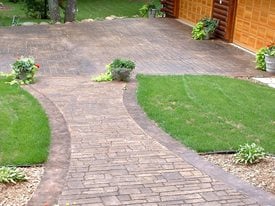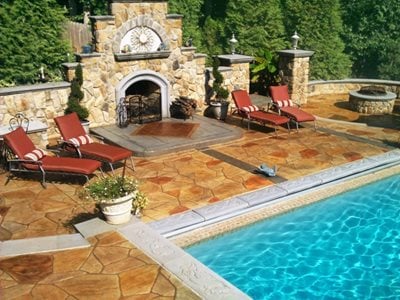
Sublime Concrete Solutions LLC in Plano, TX.
Like conventional concrete, stamped surfaces will provide decades of service when properly installed and maintained. Stamped concrete will require some routine cleaning and maintenance depending on exposure conditions and the type and amount of traffic it receives.
Find stamped concrete contractors near me.
Find concrete cleaning contractors near me.
Here are tips for cleaning and maintaining your stamped concrete to preserve its beauty and extend its service life:
What is the Best Way to Clean Stamped Concrete?
Routine cleaning of stamped concrete is simple. Sweep and wash the surface occasionally to avoid dirt buildup using a push broom, garden hose, and a mild detergent.
Here are the steps for cleaning stamped concrete:
- Rinse well with a garden hose on high pressure.
- Scrub with a push broom and a small amount of liquid dish soap.
- Rinse again, making sure to remove all soap residue.
If this method isn't effective, try using a pressure washer on any remaining stains. But don't set the pressure too high, as this could cause damage to the sealer or textured surface. Or you can hire a contractor that specializes in professional concrete cleaning.
Helpful hint: Although sealers will inhibit stains, it's still a good idea to remove spills, oil, grease, or other possibly damaging substances immediately.


